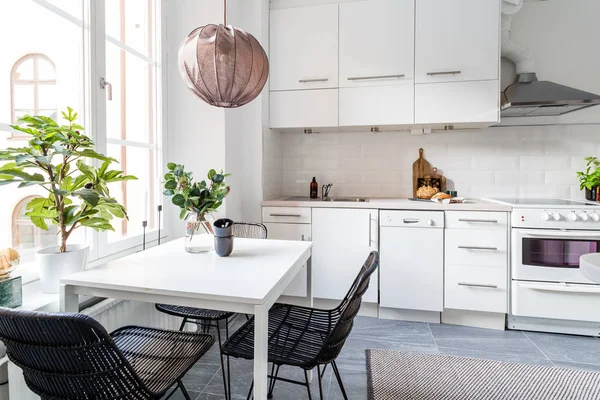Open concept living spaces can be a boon for family interaction and entertaining. However, they can also become messy in a hurry.
To maximize the efficiency of your kitchen, remove walls that obstruct movement between your kitchen and dining or living areas. Then, implement these design and décor tips to make the transition feel natural.
Maximize functionality in small open-concept kitchens with smart storage, multifunctional furniture, and strategic layout. Visit this website to see more tips.
Remove Walls
If you’re like most homeowners, you’ve been drooling over the beautiful open concept kitchens you see in home magazines and on HGTV. While these sleek, modern designs are sure to impress, they also provide a practical benefit: increased functionality and value for your home.
To create a truly seamless space, you’ll need to knock down some walls. However, it’s important to ensure you aren’t removing any load-bearing walls. These are vital for the structural integrity of your home and should only be removed by a licensed professional.
Opening up your kitchen and dining room can transform the entire house and make it feel larger. It also makes it easier to entertain, as you can engage with guests while cooking or cleaning up. However, it’s important to implement smart storage solutions to maintain tidiness and reduce clutter. In addition, consider upgrading your HVAC system to efficiently heat and cool the new space. This will prevent a cold draft during the winter and overheating in the summer.
Maximize Natural Light
With walls removed, natural light can easily flow into your kitchen and illuminate your space. You can also enjoy unobstructed views of your beautiful garden or cityscape in the process.
The beauty of an open concept is that it’s easier to keep the family and guests entertained in one large space rather than having to shift everyone into different rooms or outside for dinner. This can make socializing and bonding much easier and more enjoyable!
Choosing the right lighting fixtures is another way to help bring natural light into your home. For example, opting for recessed lights that stretch across the entire room is a great way to keep your kitchen bright without blocking natural light from other areas.
Similarly, adding mirrors to your kitchen is a wonderful way to reflect light and brighten up your kitchen. However, it is important to choose the right mirrors to ensure that they don’t create a glare on TV screens or distract from other decor.
Choose the Right Flooring
Choosing the right flooring can help define each space and add visual appeal to an open concept layout. It is also vital to choose materials that are durable, can withstand high levels of moisture and are easy to clean.
Ceramic tile is a practical option that comes in a variety of colors and styles to complement any aesthetic. Wood-like laminate is another popular choice because it emulates the look and texture of genuine hardwood floors but doesn’t require the refinishing that comes with solid or engineered hardwood.
Often, homes have architectural details like molding or paneling that can serve as natural boundaries to separate living spaces. If not, consider adding half walls to define your dining room or install crown molding to create a focal point that defines a living area.
Add Storage
Creating an open concept layout doesn’t mean you have to sacrifice storage options. In fact, optimizing your kitchen’s storage solutions can help keep your home clean and organized. From stylish shelving to nontraditional pantry ideas, here are a few tips that will allow you to integrate your kitchen with the living room seamlessly while keeping your home’s interior design functional and cohesive.
Maximizing natural light is also crucial to an open-concept kitchen’s aesthetic and functionality. If you’re building a new kitchen or remodeling your current one, consider adding skylights to let in ample sunlight and create an inviting atmosphere.
Similarly, consider installing upper cabinets that extend to the ceiling to store infrequently used items like holiday cookware and extra napkins. If you choose to go with this option, be sure to use a color and material that matches your base cabinetry or countertops for an integrated look. Alternatively, opt for open shelving to add depth to your space and display decorative items while storing everyday essentials.
